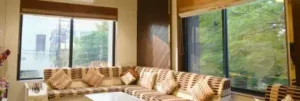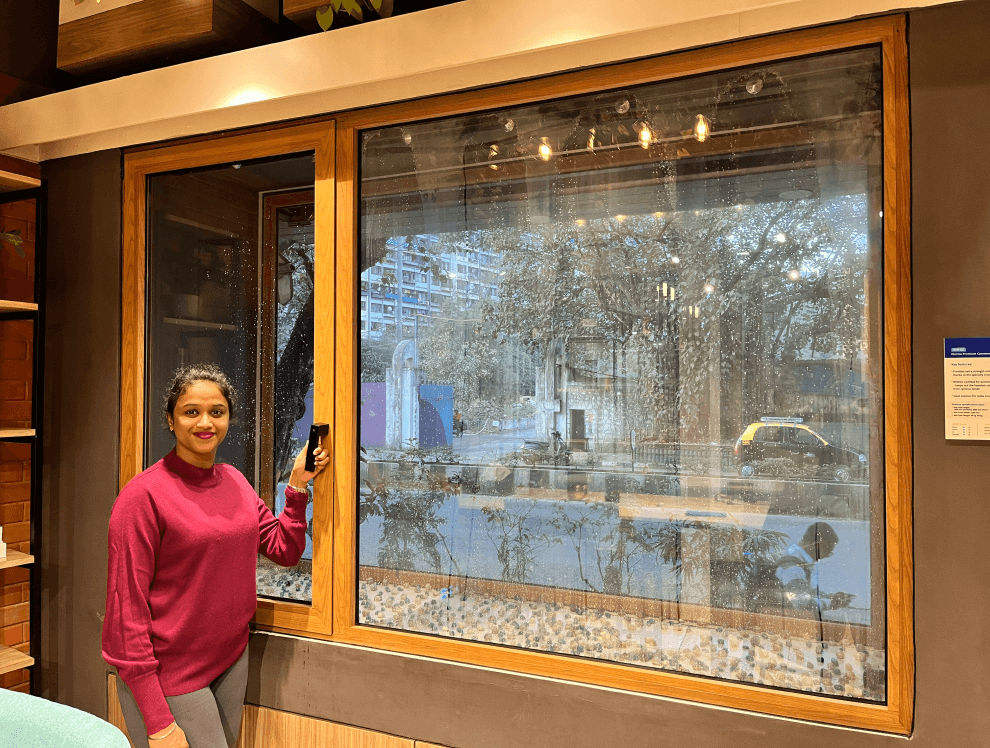
How to Plan your House Renovation? From Installing Sliding Windows to Selecting the Right Wall Colours
Homeowners who have done home renovation will often tell you two things – home renovation takes longer than you expected and it will cost you more than you budgeted for. Sometimes it is easy to get lost on your way to renovating a space. However, a well-thought-out plan and a fresh perspective on the design style can give your home renovation project a good kickstart. Let us look at some easy and simple tips on planning your home renovation:
-
Start with Design and Planning
The first and the most important thing that you should start with is the floor plan. It is the foundation on which your home’s interior design is built. A good floor plan creates a nice flow between spaces. Many people love open concept floor plans where the living room, dining area and kitchen act as one unified space. The closed concept floor plan, on the other hand, allows the living room to be separated by walls and doors. The two concepts have their own advantages. While deciding the floor plan, it is important to take into consideration factors such as:
- How often do you entertain? An open floor plan is often recommended for those who love entertaining.
- How much daylight does the room receive? Should the room be designed to get more sunlight? Daylight can make a room appear larger than it actually is.
- What is the architectural style of the house? Is it modern, contemporary or colonial? Deciding on the floor plan based on the style will help you achieve the right results.
-
Identify Problems and Solve them Creatively
Renovation is a great opportunity for you to fix problems. Before you start renovating the house it is important for you to make a list of challenges or problems that you wish to address. It could be:
- Less storage space
- Attic is too dark and dull
- Rooms being dingy
- Awkward corners
- Windows being plain and drab
- Dull flooring
- Cracks or seepage on the walls
- Outdated doors
-
Plan for Windows
Window replacement or renovation should not be an afterthought. Windows not just fill the room with sunshine, they also pack an architectural punch that elevates the overall look of your home. Keep reading to learn all about what goes into window replacement:
-
Openable vs Sliding
One of the most important decisions that you have to make is to choose between openable and sliding windows, well, the two have their benefits. The choice depends on personal preference and the space. While both types of windows are easy to operate, sliding windows are more appropriate for large windows and high rise buildings. -
Installation
It is important to decide if you wish to add more windows to your house or you just want to replace the existing ones. -
Weather conditions
Window frames and glass panes that you choose should be in accordance with the weather conditions of the place you live. Our WiWA© certified and tested windows are designed to withstand extreme weather conditions. Made of Duranium™, a special alloy invented by Hindalco, the company that makes parts for aerospace missions, Eternia windows can withstand even cyclonic winds. The airtight design also keeps the water out even during the heaviest of rains in India. -
Soundproof
If the noise from the street or neighbours have been bothering you, renovation is the best opportunity to install soundproof windows. Eternia windows with their airtight design can reduce outside noise – they can bring down the noise level to as minimum as 35 dB to 40dB. The thick laminated glass and the durable aluminium frames provide maximum acoustic insulation. -
Colour
The colour of the windows can infuse personality into a room. Whether you want a wooden finish or glossy finish, our windows can be customised to suit the decor of your house.
-
Openable vs Sliding
-
Choose Your Colours
There are no two ways that the colour is the most important and powerful interior design element. The different colour schemes create different moods. Some of the popular colour schemes include:
-
Complementary colour schemes
A complementary colour scheme is created by using two colours which are on the opposite side on the colour wheel. This colour scheme usually involves the use of bold colours such as green and red, and blue and orange. If you are using complementary colour schemes, ensure that colours do not outshine each other. -
Analogous colour schemes
You can create an analogous colour scheme by using three colours that are positioned next to each other in the colour wheel. For instance, green, orange and yellow . This scheme is one of the go-to options for many home owners as they are easy to work with. -
Triad schemes
A triadic colour scheme involves the use of three colours evenly spaced on the colour wheel. The basic palettes are red, blue and yellow, and orange, purple and green. This scheme is apt for large rooms such as living rooms and dining areas. -
Monochromatic colour scheme
One of the simplest ways to create a harmonious look at home is opting for a monochromatic colour scheme. The scheme relies on the use of a single colour. Often people confuse a monochromatic colour scheme with monotonal which uses one basic colour throughout a room. Monochromatic schemes use various shades and tones of a colour to add a sense of differentiation within a space.
-
Complementary colour schemes
-
Light Fixtures should not be an Afterthought
Lighting is an integral part of interior design. The right kind of light determines how you and your guests will perceive a room’s decor. Before starting with the renovation project, acquaint yourself with the concept of layering lighting. It uses a variety of different lighting techniques within a single space at the same time. The use of different lights gives depth and character to the space. The most commonly used lighting techniques are:
-
General lighting
General lighting provides the overall illumination of a space. These lights are designed to provide uniform light to the room. The sources of general lighting include chandeliers, recessed ceiling lights and track lighting. -
Accent lighting
It is used for highlighting artifacts, plants, water bodies, bookshelves, or photos. Adjustable spotlights or pendant lights are good sources of accent lighting. -
Task lighting
It is used for illuminating a particular area to help you get your work done. For instance, a steady and focused source of light pointing towards the platform of the kitchen or on the study table helps to carry out tasks with better visibility.
-
General lighting
-
Plan ahead for waste removal
People love to be part of the creative process involved with the renovation but they often forget to plan for waste removal. Include the cost of getting rid of debris in the renovation budget and speak about waste removal arrangements with the contractor beforehand.
Frequently Asked Questions
Consider these factors when choosing the type of window for your home renovation:
- Architectural Design: Choose the style of window that aligns with your space’s architecture.
- Ventilation and Natural Light: Opt for sliding windows to maximise natural light entering the space, and to keep the area well-ventilated, airy, and comfortable.
- Energy Efficiency: Opt for windows with aluminium frames and double-glazed glass to minimise heat loss and maintain a consistent temperature throughout the year.
- Maintenance: If you prefer low-maintenance options, consider aluminium windows, as they require minimal upkeep and are less prone to warping or scratching.
To make sure your windows are energy-efficient, you must consider the following:
- Glass Type: Choose double or triple glazing glass type with air or gas layers to reduce the heat transfer.
- Insulation: Make sure the windows are tightly sealed with a good-quality sealant to prevent air leakage and maximise energy efficiency.
- Professional Installation: The windows must be installed correctly by a professional to ensure they are tightly sealed and you can get maximum performance.
High-quality sliding windows from trusted brands have an average lifespan of about 20-25 years. It also depends on the material used, installation, maintenance, exposure to harsh weather conditions and the usage.
Sliding windows paired with high-grade aluminium frames and toughened glass can last for many years. Aluminium is considered a strong and durable material, which doesn’t warp easily and is resistant to corrosion and rust. It also depends on how regularly you maintain and clean the windows. Avoid using harsh or abrasive materials, as they can damage the surface and use mild detergents and a soft cloth to remove dust buildup.


 +91 97699 40000
+91 97699 40000











